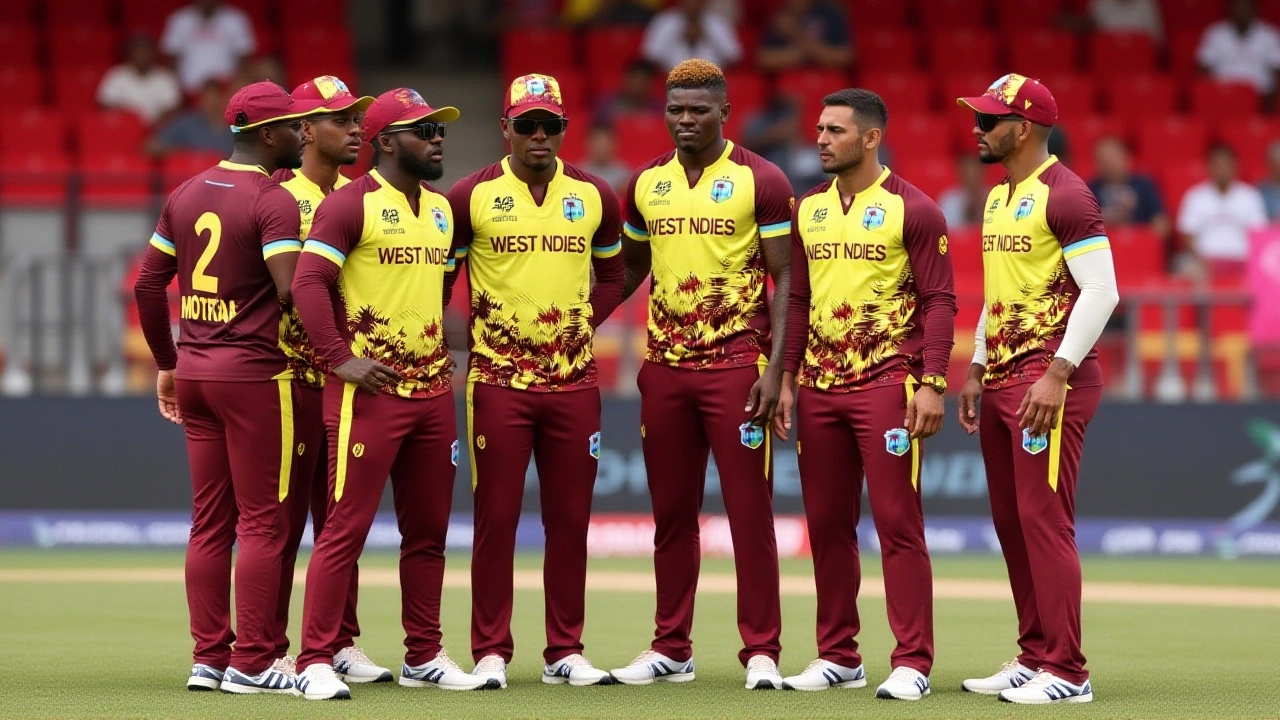England didn’t just beat West Indies — they rewrote the script at the Utilita Bowl on Tuesday, June 10, 2025. In the final T20I of the West Indies tour of England 2025, England posted a staggering 248 for 3 — one of the highest totals ever recorded at the Hampshire ground — and then watched as West Indies crumbled under the weight of expectation, finishing at 211 for 8. The 37-run victory sealed a 2-1 series win for England, a result that sent shockwaves through the T20 cricket world. What made it even more remarkable? West Indies captain Rovman Powell won the toss and chose to field first. A decision that, in hindsight, looked less like strategy and more like surrender.
England’s Batting Avalanche
From the first over, it was clear England had no intention of playing it safe. Benjamin Daniel Duckett came out like a man possessed, smashing 84 off just 46 balls — 10 fours and 2 sixes, with a strike rate of 182.61. He didn’t just score runs; he dismantled the West Indies spinners like they were practicing nets. His dismissal in the 14.5th over, caught by Shimron Hetmyer off Hinds Hosein, was met with a collective gasp — not because he was out, but because everyone knew the damage was already done.
Then came Rehan Philip Bethell. The 22-year-old came in at 178 for 3 and turned the final six overs into a demolition derby. His 36 not out off 16 balls? Four sixes. One four. A strike rate of 225.00. He didn’t just clear the boundary — he sent balls into the car park beyond the advertising boards. And he wasn’t alone. Jamie George Smith blazed 60 off 26, including five sixes. Jos Buttler, the veteran wicketkeeper, added 22 off 10 — a reminder that even in the twilight of his career, he’s still the most dangerous man in the death overs. And then there was Harry Brook, calm as a monk, finishing 35 not out off 22. The captain didn’t need to go big. He just needed to be there. And he was.
England’s innings had everything: power, precision, and panic-free execution. Eleven wides from the West Indies attack? That’s not just poor line and length — that’s mental fatigue. When you’re bowling to a side that treats the 18th over like a batting clinic, you don’t just lose the match. You lose your nerve.
West Indies’ Fight, But Not Enough
West Indies didn’t roll over. Not even close. Shimron Hetmyer played with flair, cracking 52 off 39. Andre Russell — yes, that Andre Russell — came in at 127 for 4 and smashed 31 off 14. For a while, it looked like they might pull off a miracle. The crowd rose. The TV cameras zoomed in. The scoreboard blinked: 189 for 6 in the 17th over.
But then came the collapse. Three wickets in 12 balls. Jomel Warrican Motie, the off-spinner, bowled with grit but couldn’t stop the bleeding. The pace attack? Lacking rhythm. The fielding? Erratic. When the final ball was bowled, the West Indies had 37 runs to spare — and no answers.
Their problem? Bowling depth. And it’s not new. In their last four T20Is against top-eight teams, West Indies have conceded over 200 runs in three of them. They have the batters. They have the power-hitters. But when the pressure mounts, their bowlers — especially the spinners — crumble under the weight of expectation.

Why This Matters Beyond the Scoreboard
This wasn’t just another T20I win. It was a statement. England, under Harry Brook, are building something dangerous — a team that doesn’t just chase targets but sets them. Their batting lineup now has six players capable of scoring 70+ in 20 overs. That’s not depth. That’s overload.
Meanwhile, West Indies — once the undisputed kings of T20 chaos — are stuck in transition. Their core is aging. Their young guns are talented, but untested under pressure. And their coaching staff? Still trying to find the right balance between aggression and control.
The England and Wales Cricket Board (ECB) will be thrilled. This win comes just weeks before their World T20 warm-up series. The confidence boost? Priceless. For Cricket West Indies (CWI), the message is clear: fix the bowling, or risk being left behind in the new T20 era.

What’s Next?
England returns to domestic cricket before facing Australia in a three-match ODI series in July. West Indies head to the Caribbean for the T20I series against Bangladesh — a chance to rebuild, but also a trap. If they lose again, the pressure on their selectors will explode.
As for the Utilita Bowl? It’s now officially a fortress. With a 25,000-seat capacity and a reputation for high-scoring games, it’s becoming the new Mecca for explosive T20 cricket. And on June 10, 2025, it witnessed something unforgettable: a batting masterclass that may well define England’s next generation.
Frequently Asked Questions
How does this result impact England’s chances in the upcoming T20 World Cup?
England’s 248-run total and dominant 2-1 series win over West Indies signal they’ve unlocked a new level of batting firepower. With six players capable of 70+ in 20 overs, they now have the depth to chase or set any target. This performance, especially under pressure at the Utilita Bowl, gives them serious momentum heading into the T20 World Cup, where high-scoring games are becoming the norm.
Why did West Indies lose despite strong individual performances?
West Indies lost because their bowling lacked consistency — especially in the middle overs. While Hetmyer and Russell scored quickly, their spinners (Motie and Hosein) were hit for 11.2 runs per over. Their fielding also dropped key catches, and their pace attack failed to contain England’s power hitters. Individual brilliance isn’t enough without collective discipline.
What’s the significance of the Utilita Bowl in modern T20 cricket?
The Utilita Bowl, home to Hampshire CCC since 2001, has become one of the highest-scoring T20 venues in England. Its small boundaries and flat pitch favor aggressive batting, and the 248 posted here is now the second-highest T20I total at the ground. Teams now see it as a place to set records, not just win matches — making it a crucial test for modern batting lineups.
Who were the standout performers in the match?
Ben Duckett (84 off 46) and Rehan Bethell (36* off 16) were the architects of England’s win, combining power and precision. For West Indies, Shimron Hetmyer (52 off 39) and Andre Russell (31 off 14) showed flashes of brilliance, but their contributions were isolated. The match was defined by England’s depth — seven players scored 20+ runs — while West Indies relied on just two.
What does this mean for Harry Brook’s captaincy?
Harry Brook’s leadership was quietly brilliant. He didn’t need to score big — he just needed to stay calm and let others explode. His 35* off 22 was the perfect anchor. This win cements his status as England’s future T20 captain. He’s not flashy, but he’s ruthless in building momentum — a rare trait in modern cricket.
Is this the end of West Indies’ T20 dominance?
Not the end — but a warning. West Indies still have the talent. But their bowling, especially spin, is no longer world-class. They’ve lost the knack for closing games under pressure. If they don’t overhaul their support staff and develop younger bowlers fast, they risk becoming a team that wins the first five overs but loses the last five — and that’s a death sentence in today’s T20.
